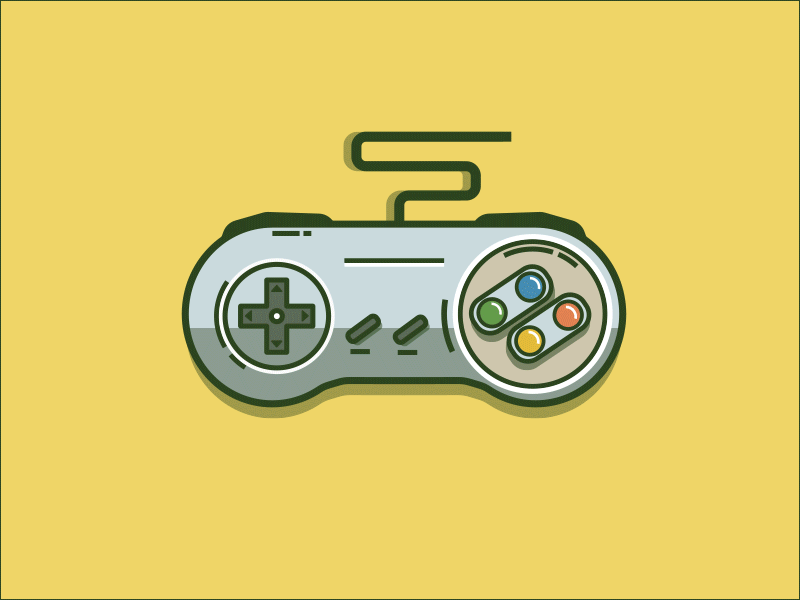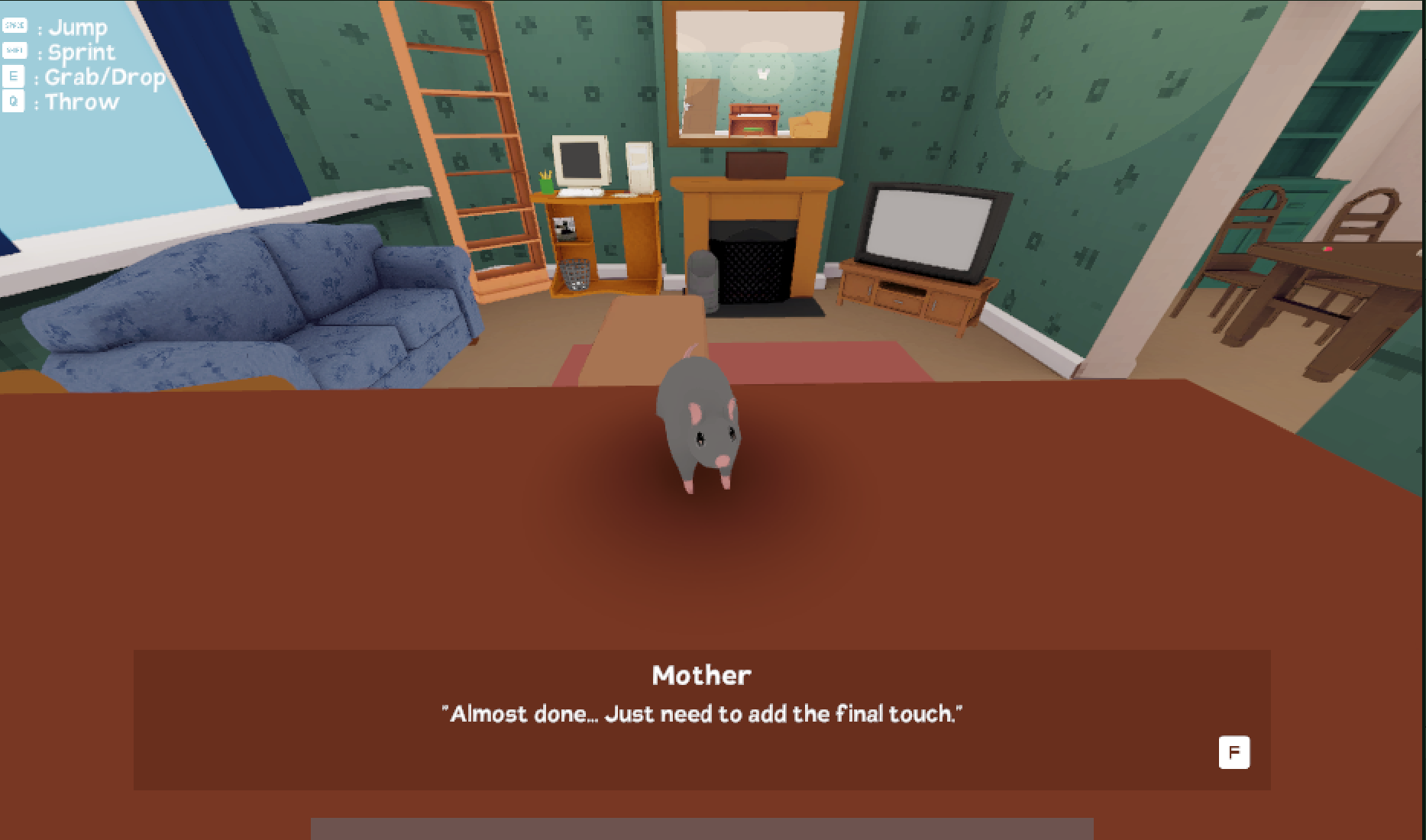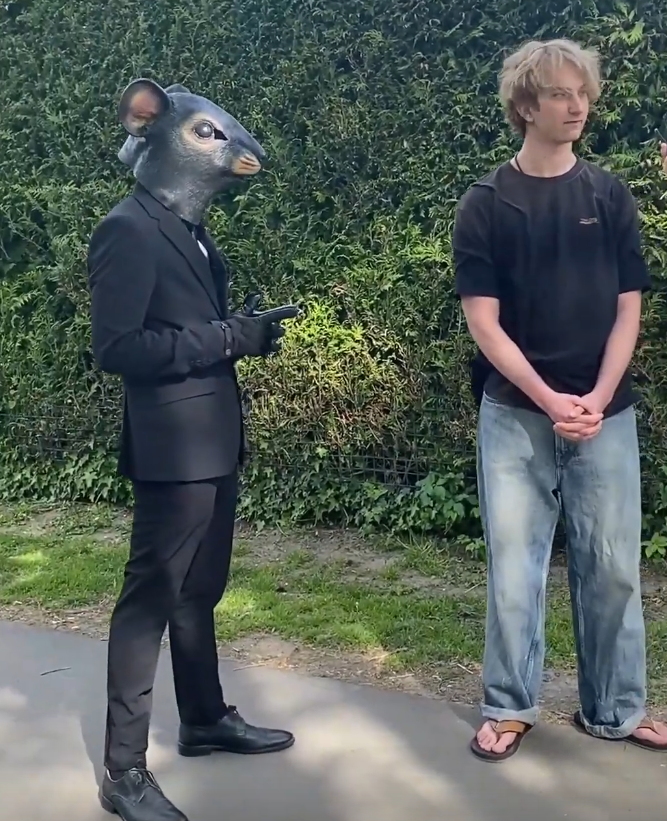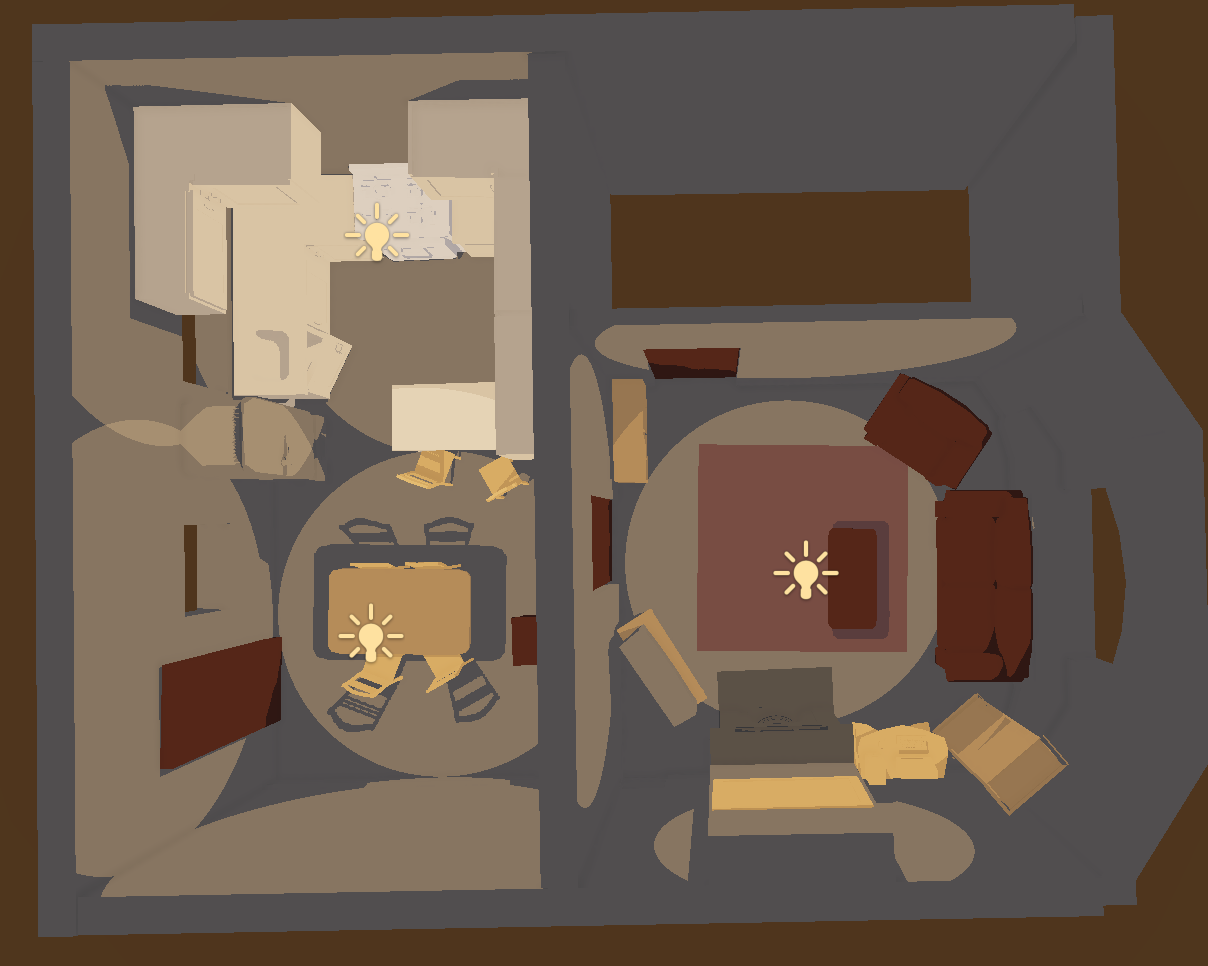DIRECTORY:
– Analysis on serving player archetypes from Bartle’s Taxonomy
– Balancing conflicting player desires and a core game pillar
Analysis on serving player archetypes from Bartle’s Taxonomy:
Oh, Rats! serves many kinds of players due to the open-world, player-first approach to the game’s narrative. We spent a while in the early weeks deciding how exactly we could make the game feel right for anyone by analysing how we could make it fun for Bartle’s Taxonomy of the 4 main player archetypes: socialisers, killers, explorers, and achievers.
EXPLORERS
Tailoring the game to the explorer archetype was probably the easiest consideration. It was already an exploration-focused game with the novel experience of being a tiny rat – having to move like a rat and think like a rat and find strange and interesting ways to get to places, both difficult and dangerous.
There was an initial conversation about having a wide sweeping “shot” of the level before letting the player into it to familiarise them with the setting first. After some debate, we scrapped this idea. It took away the joy of the players exploring for themselves, and could spoil some of the areas we wanted them to find organically.
ACHIEVERS
Achievers were another easy one to design for. Each level has a list of quests to complete in order to make the family either love or hate you, and a certain amount of time to get that done. Achievers will be naturally drawn to completing that list, as well as getting all the additional customisables and home decoration.
SOCIALISERS & KILLERS
Socialiser and killer archetypes are often at odds with each other in games, as their methods of interacting with player and NPCs are polar opposite. However, we decided to design our quests with both types in mind. For each item on the rat’s “to do” list, you can choose to either help or harm the humans you live with. Socialisers will be naturally inclined towards helping (doing the chores, finding lost items, making the family happy), whereas the killers will do the opposite (destroying + hiding items, ripping the familt apart). Originally there were only options to help, unless you made a mess in particular, however this way the harm becomes more purposeful and allows a new route of play to be involved in.
Balancing conflicting player desires and a core game pillar:
After the first playtest, one of the main concerns from our playerbase was the later incorporation of humans into the world. When told how the game would eventually have a family that tried to “catch” you, they expressed disappointment. Players enjoyed being able to run around as a rat – exploring freely, with little concern as to being “caught” by someone. This was obviously a problem, since the main conflict of the game was the friction between the player rat and the family NPC’s.
Human NPCs trying to block your life as a rat is one of the core game pillars, so there was little we could do to remove it. However, after a talk, we decided that we could lessen the pillar to strike a balance between one of the core game functions and the player’s desires.
The solution was this: we would create a day/night cycle. During the day, the family would be out to get you as Esi’s G.D.D. originally intended. However at night, the human NPCs would go to bed, and the player would have free roam of the house.
This created another problem though. At night it was a lot easier to complete the quests without NPC interference. So we additionally decided that many of the quests would be unavailable at night – making day-quests and night-quests. For example, one of the objectives is to either help decorate or ruin a cake left out on the kitchen table. At night, the mother would take the cake and lock it in the fridge, forcing the player to only confront the quest during the daytime.
This also gives the opportunity to design some incentives for interesting gameplay at night. The extra time could maybe give the player more time to set up things like traps or solve puzzles to open areas… Or we could have different enemies at night, like a cat on the prowl. The main conflict should still be between the rat and the humans, however, so we would probably only allow most quests during the day.
Another way of addressing the concern that human enemies present is making them more forgiving. With a consistent stealth system and predictable NPC AI system, players should be able to find routes that make humans less of an issue, and in fact be able to lead them into certain areas to cause mischief and chaos.






Leave a Reply